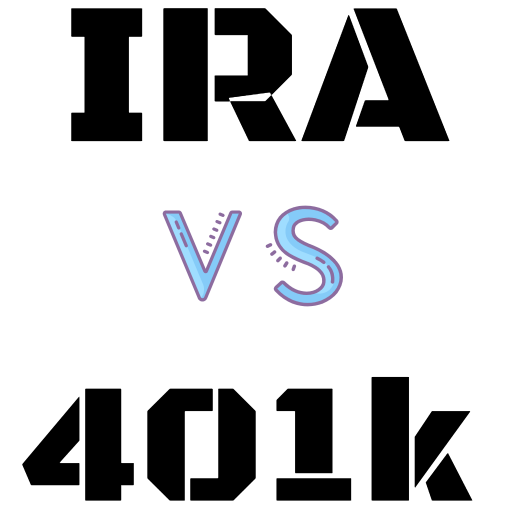

Everyone wants to know the secret to building wealth. A quick Google search on the subject will lead you down a rabbit hole of investment strategies, step-by-step tutorials, and first-hand testimonies. However, if you want to increase your net worth, it boils down to two simple steps. First, you have to find ways to increase the difference between your monthly expenses and income. Then, you use the difference in recurring investment strategies to build wealth.
Recurring Investment Strategies to Build Wealth
While it seems simple in theory, it is much more difficult in practical application. Speaking from personal experience, it’s rare to have money left in the budget for investing. Yet, even a few hundred dollars each month can multiply into substantial sums thanks to compounding interest. If you adopt recurring investments strategies, it will accelerate your portfolio’s growth exponentially over time. There are various ways to make recurring investments depending on your approach and risk tolerance. However, these two factors have caused my portfolio to increase 23% in the past year.
Dollar-Cost Averaging
No matter which investing strategy you live by, dollar-cost averaging can be applied across all of them. It is an investment strategy where you divide up the total capital you want to invest into periodic purchases. You invest a set amount at regular intervals ignoring the price fluctuations. It reduces the asset’s overall volatility by averaging it over time.
Dollar-cost averaging is one of the most fundamental recurring investment strategies to build wealth. Some investors view it as a form of passive investing. One of its greatest attractions is that it limits how much time you need to spend monitoring and administrating your portfolio. It also eliminates much of the research needed to time the market when trying to buy equities at their best prices. I prefer the consistency of regular contributions as well since it helps me avoid making decisions from fear in a declining market or greed in a rising one. With certain types of accounts, slow and steady is the best approach since it can amass into a comfortable nest egg.
The Power of Compounding Interest
Compounding interest is a powerful driving force that you can use to generate wealth. In fact, it has helped Warren Buffet become one of the wealthiest people on the planet. Think of it as earning ‘interest on interest.’ Compound interest is the calculated interest on your initial investment plus the accumulated interest. It grows exponentially faster than simple interest, so you get a greater return on your investment.
However, one important consideration is the number of compounding periods. Higher frequency means greater interest, but also diminishing returns. If this all seems too complicated, don’t worry. There are videos and online tools to help you calculate it and understand how it affects you and your investments.
So, you can see how regular contributions increase your principle. Therefore, it increases your compound interest as well, accelerating overall growth.
Retirement Accounts for Recurring Investments
Retirement accounts are an excellent vehicle for recurring investments and an important part of a well-balanced portfolio. While there are many different variations and types of retirement accounts, these three are among the most common and beneficial for beginning investors.
Roth IRA
If you are just getting starting, a Roth IRA provides a solid foundation to build on. Although there are strict limitations for annual contributions ($6,000 per year for those under 50), you can expect about a 5% return based on current market valuations. Since you pay taxes on the contributions into the account, your future withdrawals will be tax-free.
Employer-Sponsored Savings Plans
Another account people often overlook are employee-sponsored savings plans such as 401(k) s and IRAs. You are allowed to contribute up to $19,500 each year, plus your employer matching plan. The total contribution limit is capped at $58,000.
The money you put into these accounts is pre-tax, so you will have to pay taxes upon withdrawal. If your employer offers contribution matching, be sure to take advantage of it. Otherwise, you are missing out on an opportunity for free money.
Thrift Savings Plan (TSP)
These accounts are very similar to private employer-sponsored savings plan. The main difference is that thrift savings plans are utilized by federal civilian employees and military personnel.
Consistency with Recurring Investment Strategies
One reason recurring investment strategies are so successful is due to consistency. As with all things in life, performing activities on a regular basis establishes positive habits. The same is true for investing. If you get into the habit of investing at regular intervals, your portfolio will see continuous growth.
Automated payments have made it even easier to make investing a regular habit. If you have an employer-sponsored 401(k), you can schedule to have your contributions taken directly from your paycheck. You can also set up recurring payments from a checking account meaning you have one less bill to remember each month. When you put money towards your investments before you can spend it, you make your financial health the top priority.
Track Your Investments as You Build Wealth
Technology has made investing much more accessible to the average person. It also has created a range of online tools to help you evaluate your portfolio and map out your financial goals. You can find robo advisors from most financial institutions. However, this one from Personal Capital was especially helpful for me. By linking my accounts through their secure platform, I can see everything currently in my portfolio. It also provides tools to track annual savings and calculate your expected long-term returns. The graphs offer a complete visual picture of your financial health and the evaluations helps identify areas where you can improve your portfolio’s performance.
Although the world of finance can still be an intimidating place, there are plenty of resource that break it down and help you map out your financial goals. Having the right tools helps you create a realistic picture and a manageable plan using recurring investments strategies to keep you on track to hit your goals.
